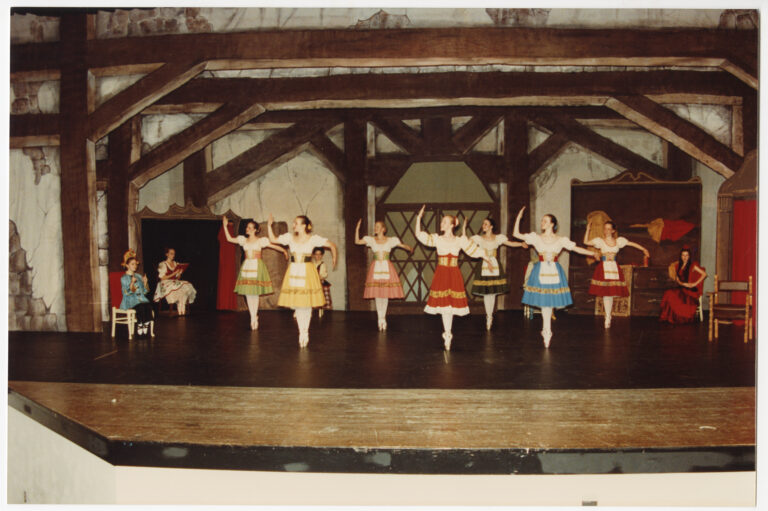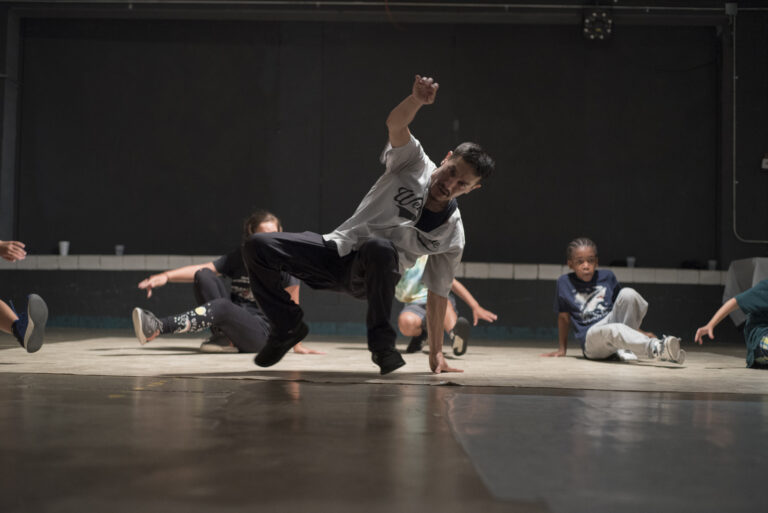After taking the time to choose and order the perfect costumes for your dancers, it’s smart to put just as much thought into their cleaning and storage. Disaster can strike even the most experienced dance companies, as Patti Fitzpatrick, San Francisco Ballet’s veteran costume supervisor, can attest. Recently, a gorgeous crystal-encrusted tutu for the “Diamonds” portion of George Balanchine’s Jewels, on loan from another ballet company, was inadvertently dry-cleaned on high heat. “When we got it back from the cleaners,” says Fitzpatrick, “all the ‘diamonds’ had cracked and we had to replace them.”
It’s not “one-size-fits-all” when it comes to taking care of dance costumes and accessories, and a little know-how is all you need to preserve them. With some extra TLC, you can be sure that your costumes stay as fresh and vibrant as possible.
Cleaning
Fitzpatrick dry-cleans costumes as little as possible, as the chemicals are tough on fabrics. (It also can be quite expensive.) Instead, she and her staff spot-clean items where they touch the dancers’ bodies: for example, by spraying a mixture of alcohol and water on the armpit area. There are also a number of commercially available soaps and sprays that can be used to clean and revive delicate fabrics. Fresh Again Uniform & Costume Deodorant Spray is good for neutralizing odors, while Fels-Naptha laundry soap works well for removing stains like makeup. Prevention is key: Encourage students to use clear deodorants and avoid perfumes to prolong the life of your costumes.
Before dry-cleaning any garment, check the care label and, when in doubt, call the manufacturer. However, it’s usually safe to dry-clean fabrics such as velvet, chiffon, georgette and big, heavily constructed items like military jackets. Be sure to find a dry cleaner that specializes in handling delicate items and understands the extra care required for dance costumes. It’s not recommended to dry-clean pieces with sequins or rhinestones, as the heat can cause significant damage.
Machine-washing is fine for synthetics, as well as sturdy cottons and permanent-press fabrics. “Large lingerie bags come in handy in the washing machine,” says Fitzpatrick. “For the Snowflake and Flower costumes for The Nutcracker, I turn the costumes inside-out and wash them on a really fast, cold-water setting.”
Lycra, spandex, tulle, wool, silk and anything with sequins or other delicate embellishments should be cleaned by hand. Wash silk in cold water with a little vinegar, and wash other fabrics for no longer than two minutes in cold water with a detergent specifically for hand-washing. For tutus, hand-wash just the panty part. Fitzpatrick recommends using Dr. Bronner’s peppermint liquid soap for spot-cleaning before hand-washing.
As for frequency of cleaning, leotards and tights should be washed after every wearing. If dancers are performing a series of recitals over a weekend or two, spot-clean costumes and spray Fresh Again after each performance. Wait to hand-wash, machine-wash or dry-clean costumes until the end of the run.
Drying and Removing Wrinkles
As with cleaning, different fabrics require different methods of drying and wrinkle removal. You can tumble-dry sturdier materials like cotton or polyester, but don’t blast them with high heat—use a gentle setting and don’t overload the dryer. Delicate fabrics can be roll-dried by placing the item on a color-fast towel and rolling down the length of the towel, squeezing gently as you do so. Then, lay the costume flat on a fresh towel to dry. Once tutus are clean, dry them upside-down on a hanger, using the loops attached at the basque.
If you need to press an item, check the label first and then place a towel between the costume and the iron before using low heat. You might want to consider investing in a steamer to remove wrinkles and freshen up costumes, particularly after storage. If the costume has any kind of glass beads or crystals, steam carefully from the underside.
Storage
The key to storing costumes so that they come out looking as good as the day they were put away is to make sure the fabric is completely dry. Any kind of wetness, whether from perspiration or an inadequate drying process, will result in mold and mildew—and a ruined, smelly outfit. For long-term storage, find a room or closet that is dark and dry—both sunlight and dampness can have a deleterious effect on costumes. Plastic rubber bins work best for items that can’t be hung, and are conveniently stackable for efficient storage.
Wardrobe racks on wheels make accessing your inventory easy. If you hang items, use either plastic, wooden or padded hangers and cover the costumes with muslin or plastic. “Storing costumes in muslin is ideal,” says Holly Hynes, costume designer and former director of costumes for New York City Ballet. “If it’s just on a hanger on a rack, you always get dust.” Costumes can stretch over time on hangers, so if the piece is weighty, place it in a bin with as few folds as possible. Be sure to fasten snaps, zippers and buttons, as well as hooks and eyes, before storing.
As for tutus, everybody has their own theory on how best to store them, says Hynes. “At New York City Ballet, each one is hung individually, upside-down,” she says. “At Houston Ballet, they have a tutu tree—a pole that comes out of a base, and the tutus plop down one on top of the other.” According to Erin Schumaker, the office manager at Green Hills School of Dance in Nashville, Tennessee, pancake tutus are put into tutu bags, and if a tutu has an attached bodice, it’s hung on a wardrobe rack. All of the costumes are dry-cleaned after a weekend of performances and easy-to-fold items are placed in air-tight containers.
Organizing with Ease
As you are getting ready to store everything neatly away, you’ll want to be sure that items are easy to retrieve. Matt Gasper, master teacher at Gasper’s School of Dance and Performing Arts in Fargo, North Dakota, and artistic director of Fargo Moorhead Ballet, tackles two recitals a year for the school as well as four more for the ballet company, so organization is key. “We take a Polaroid of each costume and put a hard copy in a three-ring folder with a note indicating where the costume is located. For example, ‘Polka-dotted Leotard: Bin #17,'” says Gasper. “So instead of standing in a closet filled with bins when you’re looking for that polka-dotted leotard, you just go through your three-ring binder. It’s an organized and easy way to keep track of costumes for smaller companies or studios.”
Follow these guidelines, and come recital season, you’ll be delighted to be able to locate and pull out fresh, ready-to-go costumes.



